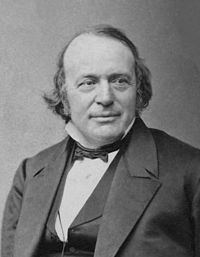Louis Agassiz
Scientist
Louis Agassiz (/ˈæɡəsi/, in English), May 28, 1807 – December 14, 1873, was a Swiss-born and European-trained biologist and geologist recognized as an innovative and prodigious scholar of Earth's natural history, with later American writings that have received scrutiny because of particular racial themes. Agassiz grew up in Switzerland, and studied and received Doctor of Philosophy and medical degrees at Erlangen and Munich, respectively. After further studies with Cuvier and von Humboldt in Paris, Agassiz proceeded with research leading to his appointment as professor of natural history at University of Neuchâtel.After visiting Harvard University mid-career, he emigrated to the U.S. in 1847 and became a professor of zoology and geology at Harvard, and to head its Lawrence Scientific School and found its Museum of Comparative Zoology. Agassiz made extensive contributions to ichthyological classification (including of extinct species) and to the study of geological history (including to the founding of glaciology), and has become broadly known through student descriptions a thorough regimen of observational data gathering and analysis. The impressiveness of his vast institutional and scientific contributions to zoology, geology, and related areas—including many multivolume research series running to thousands of pages—has been somewhat tarnished by the evidence of his resistance to theories of Darwinian evolution, and his extensive later writings on human polygenism.
Personal facts
| Birth date | May 28, 1807 |
|---|
| Birth place | |
|---|
| Date of death | December 14, 1873 |
|---|
| Place of death | Cambridge Massachusetts , Massachusetts |
|---|
| Education | University of Erlangen-Nuremberg |
|---|
| Spouse | |
|---|
